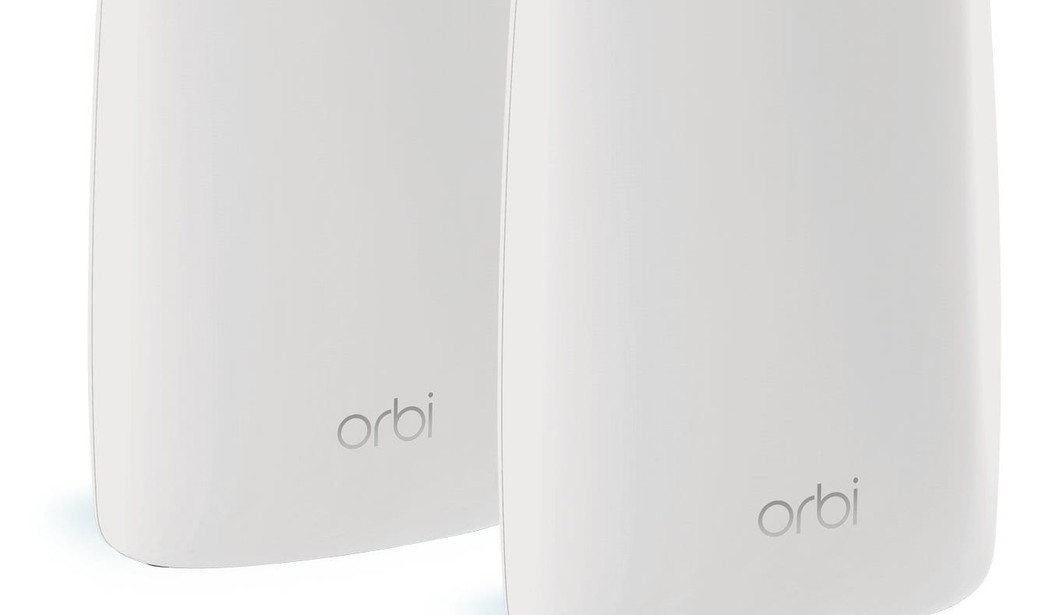
(Shutterstock)
Do you experience problems getting speedy WiFi in your home? When it’s too slow or unreliable, not only does it take a lot of time to access a website, but watching Netflix on your TV or tablet can stall or buffer, making it difficult to watch without frequent interruptions. And with all of the devices now being connected in the home, from TiVos to thermostats to doorbells, a reliable WiFi network is becoming a necessity more than ever.
While most of us are connected at home to the Internet through a cable company over a cable modem, the signal is delivered throughout the rest of our home using wireless WiFi. That requires either a cable modem with a WiFi router built in, or the use of a separate WiFi router that attaches to your cable modem.
For years we’ve relied on a single basic router to send WiFi throughout the home. While more expensive routers offered better coverage using more antennas, advanced processors, and multiple WiFi signals, even the best routers often failed to deliver a signal where you needed it, far from where your cable modem is located. All it takes is a couple of solid walls or a thick floor to significantly reduce coverage. And many cable companies locate the modem and router where it’s convenient to install, not where it will perform the best.
That’s the problem I suffered at a home in Northern Calif. The cable modem was installed in the basement, causing the signal to be weak on the first and second floors. In a nearby detached garage used as an office, the signal failed to work at all.
I tried a number of routers over the past several months, including an Asus RT series, an Apple Airport, and a few others, touted as offering broad coverage. I even tried some extenders, which are small devices that supposedly extend coverage throughout the home. I found some minor differences, but none that improved the performance on the second floor or reached the garage. And even on the first floor, the signal was mediocre because the WiFi needed to pass through a thick wooden floor. My conclusion was for this 2600 sq. ft. home, a single router was just not sufficient for good coverage where I needed it.
That’s when I decided to try one of the new generation of mesh router systems that seems to have proliferated over the past six months. Each consists of a basic unit placed near the modem and one or two additional satellite units that are placed throughout the home. The concept is that they communicate with each other to deliver the WiFi signal to the remote units, located closer to where you need the strong signal, with each remote broadcasting a WiFi signal as if it was the primary router.
Among the numerous makes are Google WiFi, Eero and Orbi. From my research and speaking with others who had tried all of them, I settled on Orbi, a new product from Netgear, one of the major router brands. It’s the product that’s received the top reviews from a majority of the technology sites.

Image via Amazon
The Orbi was simple to set up using an app on my phone. I simply connected the main unit to the cable modem in the basement and plugged in the second unit, the satellite, into an outlet in a central location where I wanted the strongest signal. In my case, I plugged the satellite into the family room on the first floor close to the TV and Xbox, next to a window that faced the garage.
Once plugged in, the glowing ring of light on the top turned white, flashed magenta for a while, and then eventually turned solid blue for 10 seconds to confirm a good connection. If it couldn’t make a good connection because of a weak signal from the main unit, it would turn amber and you’d find a different location. Once the connection was made, both the main Orbi and satellite become part of a mesh WiFi network.
I left the original router, and Apple Airport, in place for testing purposes, and the improvement was significant. The Orbi was much more effective at providing coverage throughout the house, including the second floor. Download speeds in the family room went from 20GB to over 100GB. Over three weeks of use, the Orbi has continued to work without requiring the connection to be reset, something that occasionally is needed with some routers.
You can also purchase an additional satellite if you need to extend your WiFi beyond what you can do with the single unit.
What distinguishes the Orbi from other extenders is that it has three bands of WiFi, one 2.4GHz and two 5GHz bands. It uses one of the 5GHz bands to communicate between the main and satellite units and is not used to connect to any other WiFi device in your home, providing a super speedy connection to the satellite.
The Orbi costs about $380 for the main unit and a satellite unit and comes with clear instructions. Overall it solved a problem that had been plaguing me for many months. What I realized is how we get used to mediocre WiFi and how much better our experiences can be with an up-to-date solution. For more information check out Netgear’s site.









Join the conversation as a VIP Member